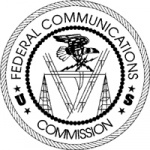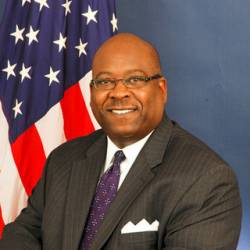
In a remarkable change of momentum, the Federal Communications Commission (FCC) issued a public notice yesterday (September 13, 2011) stating that “additional targeted testing” is needed in the matter of LightSquared Subsidiary LLC’s interference to GPS.
In a remarkable change of momentum, the Federal Communications Commission (FCC) issued a public notice yesterday (September 13, 2011) stating that “additional targeted testing” is needed in the matter of LightSquared Subsidiary LLC’s interference to GPS.
The FCC’s notice came out a day before the Center for Public Integrity (CPI) published an article chronicling LightSquared’s high-level contacts with presidential aides that cited the company’s and its chief backer Harbinger Capital’s fundraising for Democratic causes and President Obama. Quoting e-mails (heavily edited by the White House) and other records obtained under the Freedom of Information Act (FOIA) by CPI’s iWatch News, today’s article tracked a series of communications with administration technology advisors. These included an offsite April 28, 2011, meeting described in White House e-mails as the “Lightsquared interference meeting,” in which names of the people attending were blacked out in the records released under FOIA.
In addition to the CPI report, an August 26 meeting brokered by NTIA between LightSquared and concerned federal officials representing public GPS users brokered by NTIA may have been the turning point in what had been a fairly overt backing of the LightSquared initiative by FCC Chairman Julius Genachowski and the White House.
Although the FCC’s notice, issued jointly by the chiefs of the agency’s International Bureau and Office of Engineering and Technology, did not elaborate on the required testing, a footnote in the document cites a September 9, 2011, letter to the deputy secretaries of defense and transportation from Lawrence Strickling, NTIA administrator and assistant secretary for communications and information at the Department of Commerce.
That letter outlines a plan that would evaluate the effects of LightSquared terrestrial transmissions in the lower LightSquared band (1526–1536 MHz) on cellular and personal/general navigation GPS receivers by November 30. A second phase of testing would evaluate proposed mitigation plans for high-precision and timing receivers. The latter tests would not begin until LightSquared develops a filtering solution for such devices.
The requirement for additional testing marks the latest development in a controversy that blew up quickly beginning with an FCC invitation for comment issued last November about LightSquared’s plans to offer a wholesale wireless broadband service using a network of base stations transmitting in the 1526-1559 MHz band adjacent to GPS L1.
FCC’s International Bureau issued an order and authorization on January 26, 2011, allowing LightSquared to proceed with its plans on the condition that GPS interference concerns were satisfactorily resolved. That led to an expedited series of tests conducted by a Technical Working Group (TWG), which found widespread effects on many GPS receivers caused by transmissions in the upper 10-megahertz band where LightSquared initially planned to begin broadcasting.
Subsequently, LightSquared proposed to begin its transmissions in the lower 10-megahertz band, reduce the power of transmissions at its terrestrial stations (known in FCC vernacular as ancillary terrestrial components or ATCs), and help the GPS industry find ways to mitigate the effects on high-precision receivers.
Strickling’s letter formally requested that the Executive Steering Group of the National Executive Committee for Space-Based Positioning, Navigation, and Timing (PNT) work with LightSquared “to develop as expeditiously as possible a joint testing plan. . . .” Deputy Secretary of Defense Bill Lynn and Deputy Secretary of Transportation John Porcari co-chair the PNT executive committee.
Strickling noted that direct discussions between LightSquared and the Federal Aviation Administration (FAA) and NASA regarding ways to mitigate the effects of the lower 10-megahertz transmissions on, respectively, aviation and space-based receivers meant that those types of user equipment did not need to be included in the high-precision test plan for the time being.
The NTIA administrator also noted that solutions involving the filtering out of LightSquared signals, including a PCTEL antenna identified by LightSquared as a possible solution for timing receivers, might also worsen the overall performance of high-precision GPS equipment.
Despite the growing evidence of LightSquared’s adverse effects on GPS, as detailed in Strickling’s letter, the FCC remained generally optimistic about a mutually satisfactory outcome to the controversy.
In their public notice yesterday, the FCC chiefs concluded, “We appreciate the extensive resources devoted by all of the participants in the technical working group and by the federal agencies and departments. We are satisfied that the process that was established through the conditional authorization, as well as the consultation process that exists between the FCC and NTIA, is meeting our objective to fully understand the potential for harmful interference and develop solutions before LightSquared is permitted to deploy service.
“We strongly encourage all parties to work in good faith and expeditiously towards a solution that serves our dual goals of facilitating the introduction of new wireless broadband services while protecting GPS against harmful interference.”





